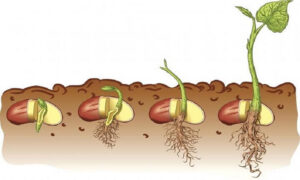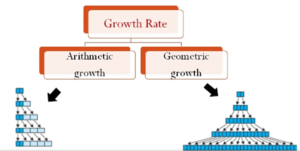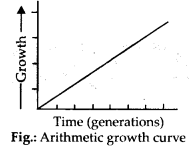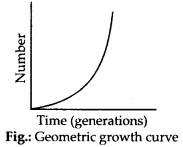Plant Growth and Development : Definition
Growth or Plant Growth is regarded as one of the most fundamental and conspicuous characteristics of a living being. What is growth? Growth can be defined as an irreversible permanent increase in size of an organ or its parts or even of an individual cell. Generally, growth is accompanied by metabolic processes (both anabolic and catabolic), that occur at the expense of energy. Therefore, for example, expansion of a leaf is growth. How would you describe the swelling of piece of wood when placed in water?
Development – Growth and differentiation.
First step in plant growth- seed germination.
Plant Growth
- Fundamental & conspicuous characteristic.
- Irreversible, permanent increase in the size of an organ or its parts.
- Accompanied by metabolic processes, the expense of energy. E.g., Expansion of leaf.
Plant Growth is indeterminate-
- Retain capacity for unlimited growth due to meristems (divide & self-perpetuate), lose the capacity to divide, make plant body.
- The open form of Growth- New cells adds to the plant body by activity of meristem.
- Root apical & shoot apical meristem are responsible for ten growth and contribute to the elongation of plants.
- Lateral meristem (dicot & gymnosperm) appears in later life, cause an increase in girth in which they are active – 20 growths.
Growth is measurable
Consequence of increase in protoplasm.
- Measured by parameters – Increase in fresh weight, dry weight, length, Arce, volume, cell no.
- One single maize root apical meristem – 17500 new cells per hour. Cells in Watermelon may increase to 3,50,000 times. (Cell size). Growth of pollen tube- Length; Surface area- dorsiventral leaf.
Phases of Plant Growth –
- Meristematic –Constantly dividing cells (root+ shoot apex), rich in protoplasm, large nucleus, 10 cell walls (thin cellulosic with plasmodesmal connections).
- Elongation – Proximal to meristematic, increase vacuolation, cell enlargement, new cell wall deposition.
- Maturation – Proximal to elongation, maximal size of cells with wall thickening and protoplasmic modifications.
Plant Growth Stages?
Seed Germination: The seed requires water, oxygen and optimum temperature for its germination. A temperature of 24-32℃ is optimum for germination. Water hydrates the enzymes and food supplies and the seed becomes activated.
Vegetative and Growth: The roots emerge from the seed and the vegetative stage begins. The most valuable growth occurs during the vegetative phase and it continues unless obstructed by environmental change.
Reproductive Stage: This is the final stage where the plant produces flowers, fruits and seeds. At this stage, the plant requires more nutrients such as phosphorus and potassium.
Click Here for Complete Biology Notes
Plant Growth Rates –
Increased growth per unit time.
- Arithmetic –Mitotic cells (Root elongation).
- Lt= l0 + rt
- Lt = length at ‘t’ L0 = length at 0 K = Growth rate/elongation per unit time.
- Geometric –
- Slow initial growth (lag phase), increases rapidly at exponential rate (progeny following mitotic division retain ability to dilute) with limited nutrients, growth slows (Stationary phase).
- W1 = w0ert W1 = final size W0 = initial size r = growth rate/relative growth
- r- measure of ability of plant to produce new plant material – efficiency index.
- Quantitative comparison in 2 ways:
- Absolute growth rate – Total growth per unit time
- Relative growth rate – Growth of given system per unit time, all to initial parameter.
Conditions for growth –
- Turgidity of cells help in extension growth.
- Linked to water status (medium for enzymatic activities) oxygen (release metabolic energy), nutrients (synthesis of protoplasm) source of energy.
- Optimum temperature range, light & gravity also effect growth.
Related Posts
- Phylum Porifera: Classification, Characteristics, Examples
- Dissecting Microscope (Stereo Microscope) Definition, Principle, Uses, Parts
- Epithelial Tissue Vs Connective Tissue: Definition, 16+ Differences, Examples
- 29+ Differences Between Arteries and Veins
- 31+ Differences Between DNA and RNA (DNA vs RNA)
- Eukaryotic Cells: Definition, Parts, Structure, Examples
- Centrifugal Force: Definition, Principle, Formula, Examples
- Asexual Vs Sexual Reproduction: Overview, 18+ Differences, Examples
- Glandular Epithelium: Location, Structure, Functions, Examples
- 25+ Differences between Invertebrates and Vertebrates
- Lineweaver–Burk Plot
- Cilia and Flagella: Definition, Structure, Functions and Diagram
- P-value: Definition, Formula, Table and Calculation
- Nucleosome Model of Chromosome
- Northern Blot: Overview, Principle, Procedure and Results



















